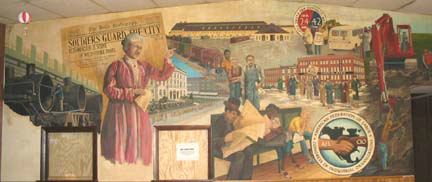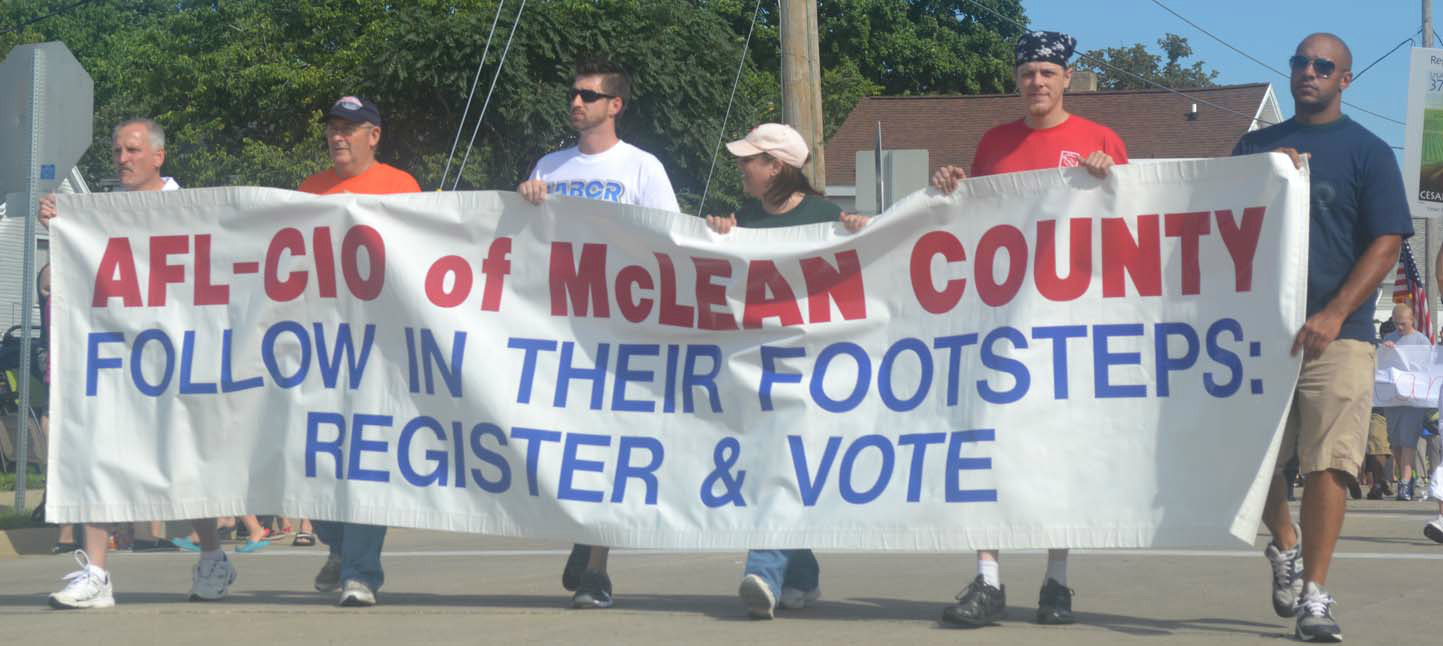|
With Illinois Governor Bruce Rauner advocating local "right to work" laws, it is important to ask, what is a "right to work" law and what does it mean for workers' and their unions?
In states where the law exists, “right-to-work” makes it illegal for workers and employers to negotiate a contract requiring everyone who benefits from a union contract to pay their fair share of the costs. Right-to-work has nothing to do with people being forced to be union members.
Federal law already guarantees that no one can be forced to be a member of a union, or to pay any amount of dues or fees to a political or social cause they don’t support. What right-to-work laws do is allow some workers to receive a free ride, getting the advantages of a union contract without paying any fee associated with negotiating on these matters.
That’s because the union must represent all workers the same, regardless of whether they join the union or pay it dues or other fees. A union contract must cover all workers, again regardless of their membership in or financial support for the union. In states without right-to-work laws, workers covered by a union contract can refuse union membership and pay a fee covering only the costs of workplace bargaining rather than the full cost of dues.
There is scant evidence these laws create jobs, help workers, or are good for a state’s economy, as supporters claim. Instead, these laws weaken unions and thereby hurt workers, the middle class, and local economies. We present here a Right-to-Work 101 so that the debate over right-to-work laws proceeds based on the facts.
Right-to-work laws don’t create jobs
Researchers who study the impact of right-to-work laws find that these laws do not create jobs—despite supporters’ claims to the contrary. The Indiana Chamber of Commerce, for example, claims that “unionization increases labor costs,” and therefore makes a given location less attractive to capital.
But in practice this low-road strategy for job creation just doesn’t pan out. Michigan and Indiana adopted "Right to work" laws in the past two years. An examination of Oklahoma, which went Right to Work in 2001, shows no long term economic benefit.
Despite boosters’ promises of job creation, researchers find that right-to-work had “no significant positive impact whatsoever on employment” in Oklahoma —and consequently the best example of how a new adopter of right-to-work laws might fare in today’s economy. In fact, both the number of companies relocating to Oklahoma and the total number of manufacturing jobs in the state fell by about a third since it adopted such a law in 2001.
Growth could be attributed to other factors. Those factors included the states’ educational-attainment level, infrastructure quality, and even its weather.
Right-to-work laws hurt workers
Right-to-work laws lower worker pay and benefits and make workplaces more dangerous for all workers—whether unionized or not—by weakening unions.
Unions have a significant and positive effect on the wages and benefits of union and nonunion workers alike. Unionized workers are able to bargain for better wages, benefits, and work conditions than they would otherwise receive if negotiating individually. The effect on the average worker—unionized or not—of working in a right-to-work state is to earn approximately $1,500 less per year than a similar worker in a state without such a law.
Workers in right-to-work states are also significantly less likely to receive employer-provided health insurance or pensions. If benefits coverage in non-right-to-work states were lowered to the levels of states with these laws, 2 million fewer workers would receive health insurance and 3.8 million fewer workers would receive pensions nationwide.
The fact that unionization raises people’s wages and benefits is borne out by surveys of union members and by common sense. Unions also affect the wages and benefits of nonunion workers by setting standards that gradually become norms throughout industries.
Right-to-work laws also may hurt workplace safety. For instance, the occupational-fatality rate in the construction industry—one of the most hazardous in terms of workplace deaths — is 34 percent higher in right-to-work states than in states without such laws.
Right-to-work laws weaken the middle class
By weakening unions right-to-work laws also weaken the middle class. From pushing for fair wages and good benefits, to encouraging citizens to vote, to supporting Social Security and advocating for family-leave benefits, unions make the middle class strong by giving workers a voice.
Nine of the 10 states with the lowest percentage of workers in unions—Mississippi, Arkansas, South Carolina, North Carolina, Georgia, Virginia, Tennessee, Texas, and Oklahoma — are right-to-work states. All of them also are saddled with a relatively weak middle class. The share of total income going to the middle class—defined as the middle 60 percent of the population—in each of these states is below the national average.
Right-to-work laws hurt small business
Since few small businesses are ever unionized, changing union regulations won’t affect them. Yet unlike big manufacturers who can choose which state to expand into, most small businesses are rooted in a local community and dependent on local consumers.
When right-to-work laws lower the wages and benefits of area workers, they also threaten to reduce the number of jobs in the economy by reducing consumer demand.
The Economic Policy Institute estimates that for every $1 million in wage cuts, six jobs are lost in the service, retail, construction, real estate, and other local industries.
For small businesses that depend on local sales, reducing the amount of disposable income in local employees’ pockets can be devastating.
Right-to-work laws are bad for our democracy
Right-to-work laws infringe on the democratic rights of the electorate by weakening unions. Unions help boost political participation among ordinary citizens and convert this participation into an effective voice for pro-middle-class policies. By weakening unions, they are less able to advocate for pro-worker policies within our government and help get workers out to vote.
Research shows that for every percentage-point increase in union density, voter turnout increased by 0.2 to 0.25 percentage points. This means that if unionization rates were 10 percentage points higher during the 2008 presidential election, 2.6 million to 3.2 million more citizens would have voted.
Unions also help translate workers’ interests to elected officials and ensure that government serves the economic needs of the middle class. Unions were critical in securing government policies that support the middle class such as Social Security, the Affordable Care Act, family leave, and minimum-wage laws.
Indeed, this may be a large part of why many conservatives support right-to-work laws.
Research demonstrates that supporters’ claims that these laws will create jobs and strengthen local economies are not credible. Instead, supporters may back these laws as a pretext for attacking an already weakened union movement in hopes of crippling it as apolitical force and as an advocate for all workers.
The bottom line: Right-to-work laws work against the critical needs of our economy, our society, and our democracy.
Adapted from Economic Policy Institute materials.
|



